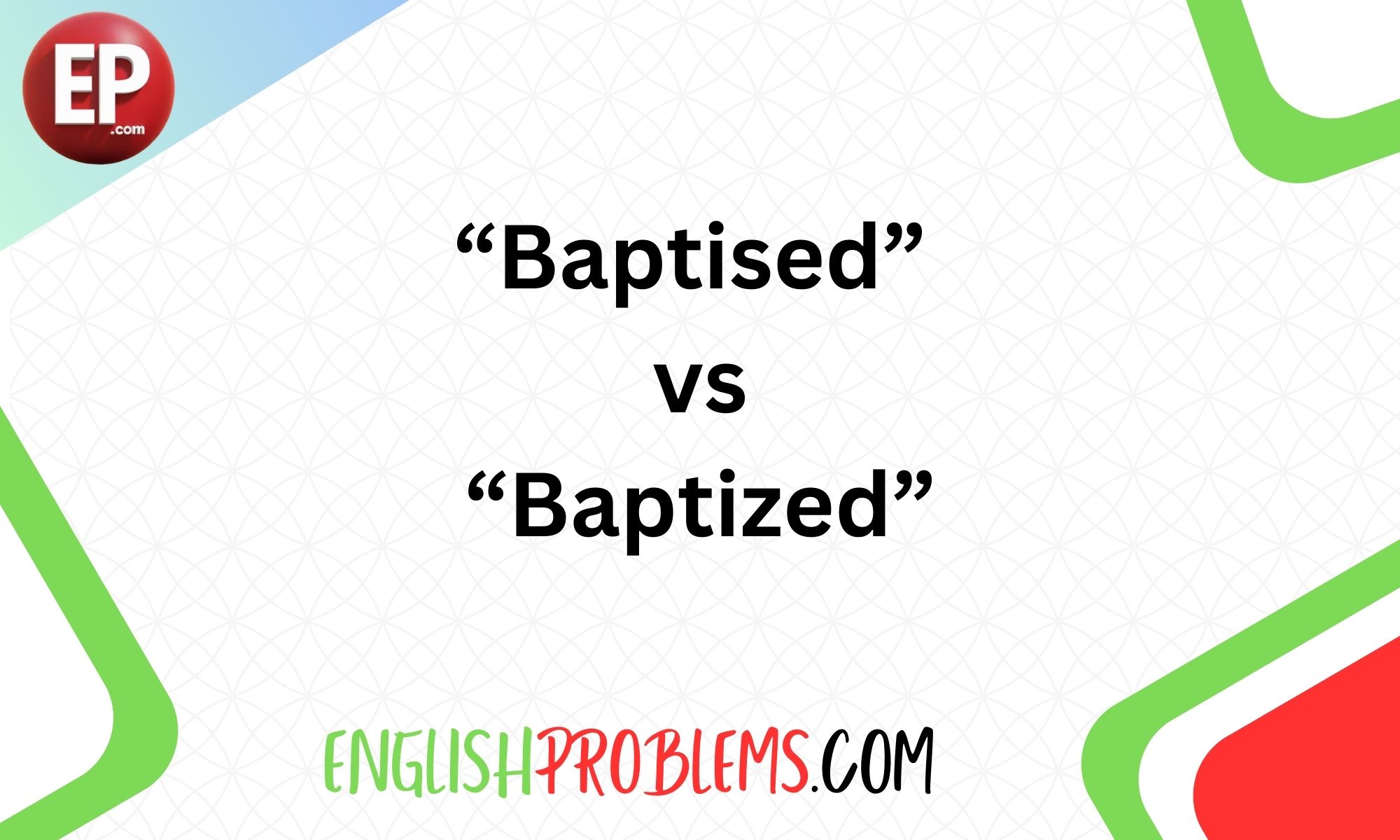Understanding the nuances between “baptised” and “baptized” can illuminate more than just spelling differences—it reveals insights into linguistic evolution, cultural practices, and regional variations.
In this comprehensive guide, we will delve into the significance of these terms, explore their historical context, and provide practical advice for usage.
Understanding the Terms
Baptism is a significant ritual across various religions, symbolizing purification, initiation, and spiritual rebirth. This rite involves the use of water and is a key sacrament in Christianity, performed in different forms such as sprinkling, pouring, or immersion.
Definition of Baptism
Baptism’s core purpose is to signify the entrance into the faith community and the cleansing of sin. Here’s a breakdown of how baptism is perceived:
- Christianity: In Christianity, baptism is often seen as a rite of entry into the Church and is considered necessary for salvation by many denominations. It symbolizes purification and the believer’s acceptance of Christ.
- Other Religions: In other faiths, similar rites of purification exist, but they may not be called baptism. For instance, in Judaism, there is a purification ritual known as Mikveh.
Spelling Variations: Baptised vs. Baptized
The difference between “baptised” and “baptized” primarily stems from regional spelling conventions in English.
British vs. American English
- British English: The spelling “baptised” follows the traditional British pattern of using “s” instead of “z.” British English often retains older spellings and reflects a historical preference for Latin roots.
- American English: The spelling “baptized” reflects the American English trend of simplifying spellings, influenced by Noah Webster’s spelling reforms in the 19th century.
Here’s a quick comparison:
British EnglishAmerican EnglishBaptisedBaptizedOrganisedOrganizedColourColor
Historical Background
Evolution of Spelling
The spelling “baptize” has undergone changes influenced by linguistic evolution and regional preferences. Originally derived from the Greek word “baptizein,” which means “to immerse,” the term was Latinized as “baptizare.” Early English forms retained the Latin “s,” but later reforms adapted it to “z” in American English.
Influence of Language Reform
Language reform movements, especially those led by Noah Webster, played a significant role in standardizing American English spelling. Webster’s reforms aimed to simplify and regularize spelling, making “baptized” the standard form in the United States.
Cultural and Religious Context
Religious Texts and Practices
The choice between “baptised” and “baptized” can reflect the regional and denominational preferences in religious texts and practices. For example:
- Christian Denominations:
- The Church of England and other British denominations use “baptised.”
- American Protestant denominations typically use “baptized.”
- Religious Documents: Official documents and literature from different regions will use the spelling appropriate to their dialect.
Common Misconceptions
Spelling and Meaning
A common misconception is that the spelling affects the meaning of baptism. In reality, “baptised” and “baptized” refer to the same sacrament and carry no difference in religious or symbolic meaning. The choice of spelling is purely a matter of regional preference.
Practical Implications
Writing and Editing
When writing or editing, choosing the correct spelling depends on the intended audience. Here’s a guide to help:
- British Audience: Use “baptised” to align with British English conventions.
- American Audience: Use “baptized” to match American English norms.
Consistent Usage
Ensure consistency in spelling throughout your document. For instance:
- British English: All instances of “baptize” should be “baptise” and vice versa.
- American English: Stick to “baptized” throughout the text.
Case Studies and Examples
Real-World Examples
Here are some examples showcasing the usage of “baptised” and “baptized”:
- Literature:
- British author J.K. Rowling uses “baptised” in her writings, reflecting her adherence to British spelling conventions.
- American author Mark Twain uses “baptized” in his works, consistent with American English.
- Official Documents:
- The Church of England’s official documents use “baptised.”
- The United Methodist Church’s publications use “baptized.”
Analysis
In practice, the spelling choice aligns with the regional norms and does not alter the sacramental or symbolic significance of baptism. This alignment helps maintain clarity and consistency in religious and formal writing.
Conclusion
Understanding the difference between “baptised” and “baptized” offers more than just spelling clarity—it connects us to the historical and cultural evolution of language. Whether you write in British or American English, recognizing and respecting these spelling conventions enhances communication and reflects attention to detail.
Final Thoughts: The choice between “baptised” and “baptized” is a matter of regional spelling preference and does not affect the meaning of the term. Use the appropriate spelling for your audience and maintain consistency throughout your text.
Call to Action
When crafting your next document or engaging in discussions about religious practices, consider the regional preferences for spelling to ensure clear and effective communication.
References
- “The History of Spelling Reform” – Linguistic Society
- “Noah Webster and American English” – American Historical Review
- “Baptism in Religious Traditions” – Encyclopedia of Religion
This comprehensive guide should provide a clear understanding of the spelling differences and their implications, helping you navigate these variations with confidence and accuracy.

Justin Taylor is an expert in simplifying the intricacies of English for learners of all levels. His clear and concise writing style, combined with his deep understanding of linguistic nuances, makes him a go-to source for anyone looking to improve their language skills. Justin’s engaging content ensures that learning English is both enjoyable and effective.










